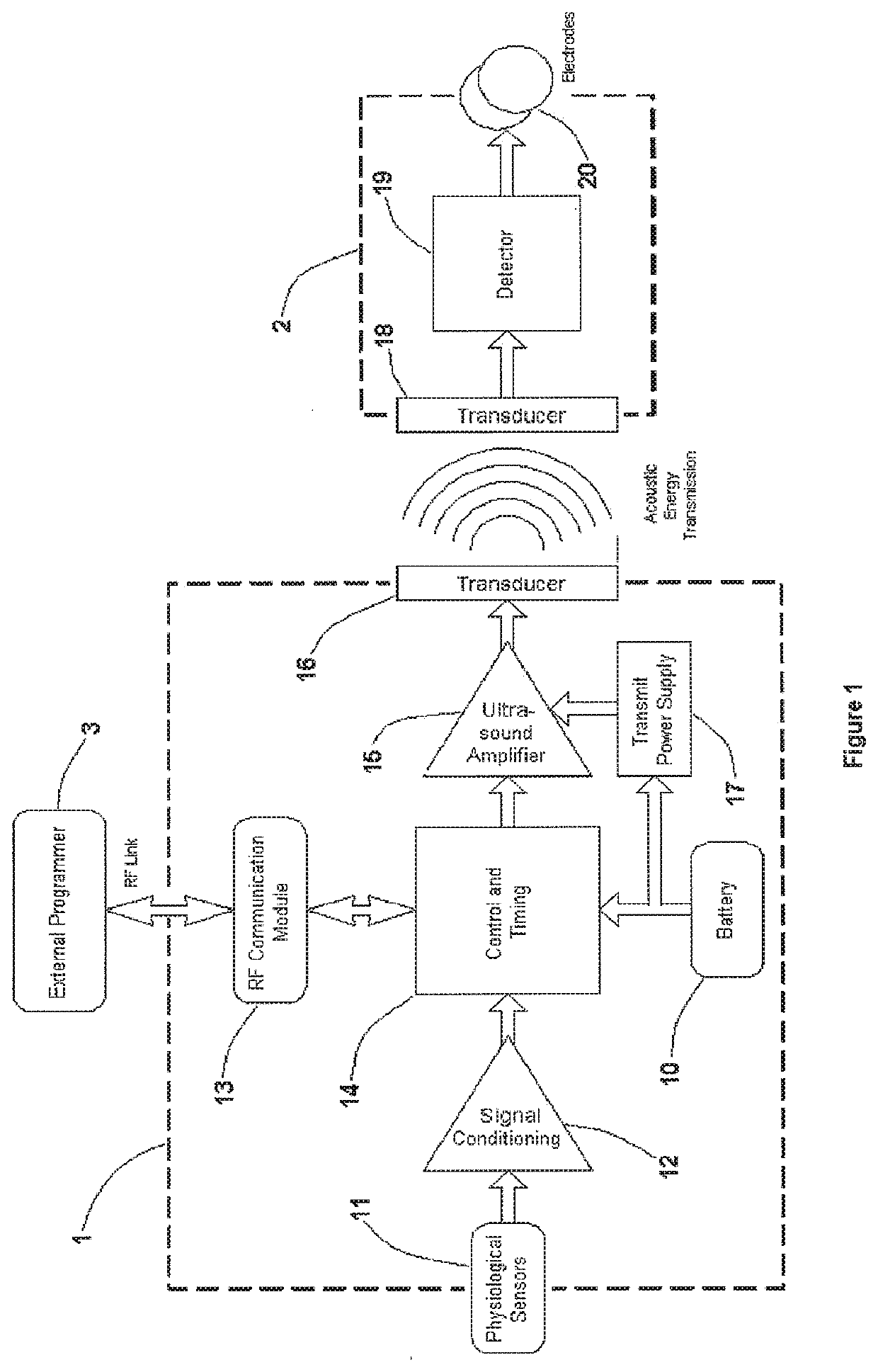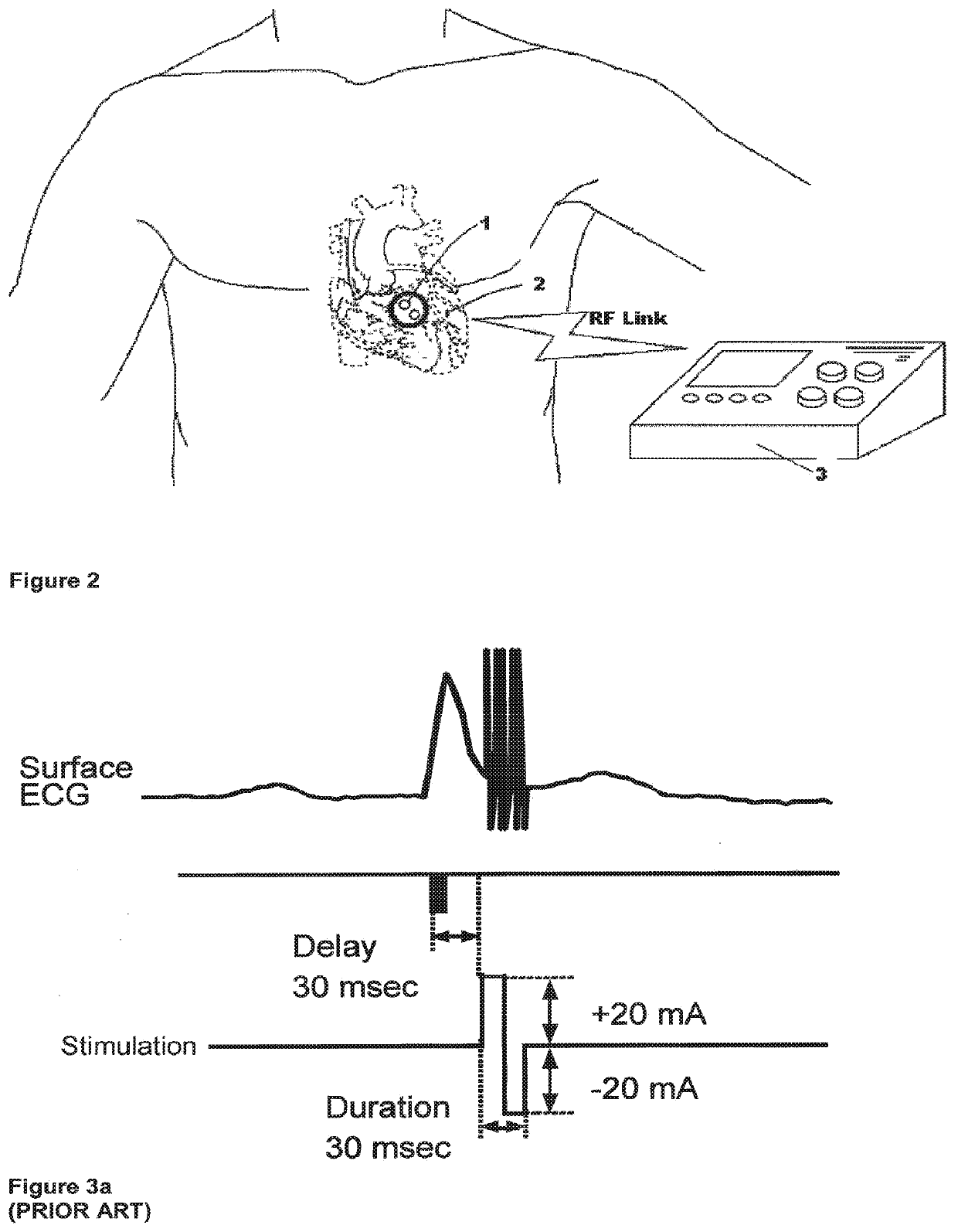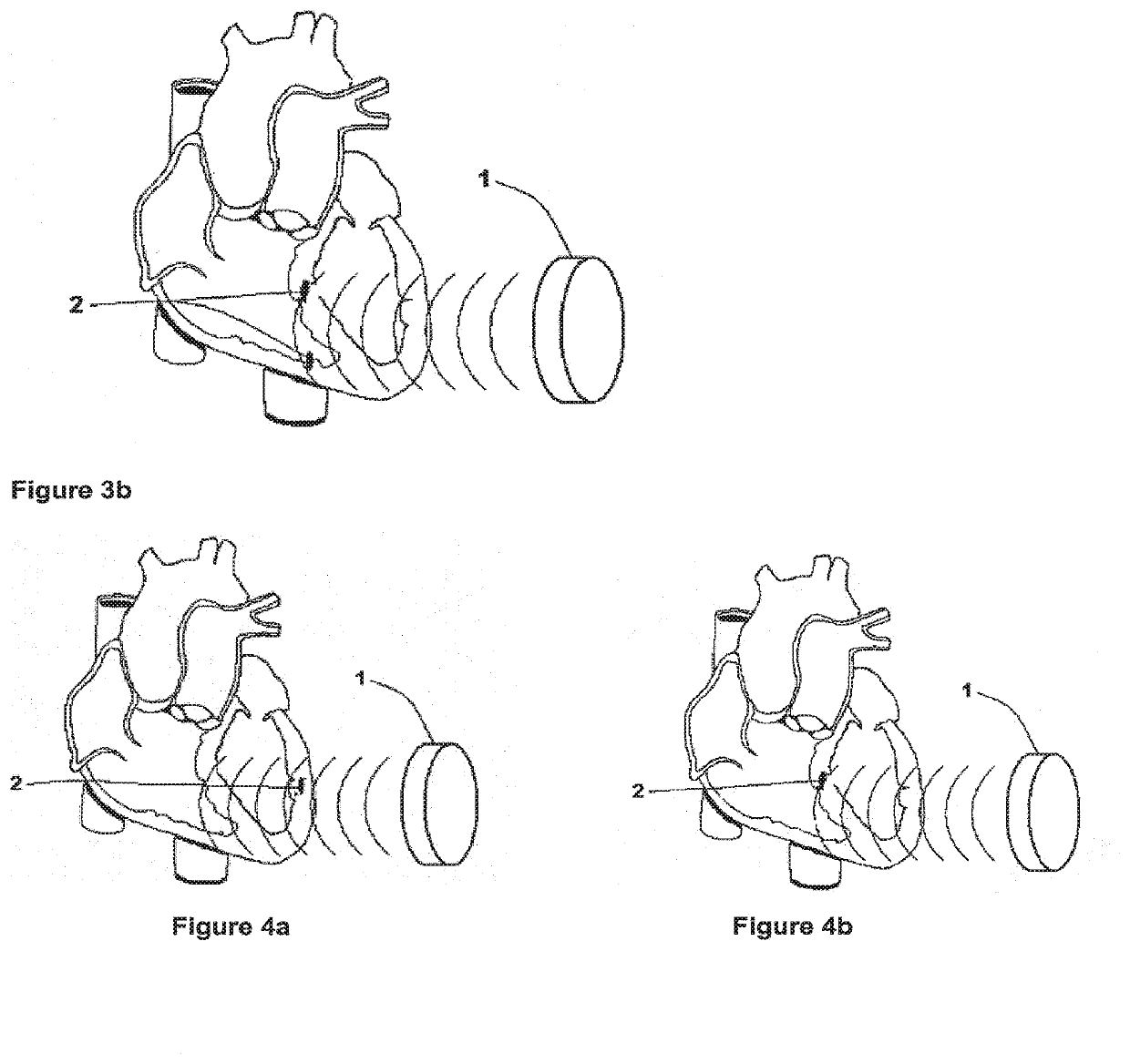Methods and systems for heart failure prevention and treatments using ultrasound and leadless implantable devices
a technology of implantable devices and methods, applied in the field of prevention and treatment of heart failure, can solve the problems of deleterious rv apex location, and achieve the effect of preventing heart failur
- Summary
- Abstract
- Description
- Claims
- Application Information
AI Technical Summary
Benefits of technology
Problems solved by technology
Method used
Image
Examples
Embodiment Construction
[0039]The present invention relies on a controller-transmitter device to deliver ultrasound energy to cardiac tissue to directly improve cardiac function and / or to energize one or more implanted receiver-stimulator devices that transduce the ultrasound energy to electrical energy to perform excitatory and / or non-excitatory treatments for heart failure. The acoustic energy can be applied as a single burst or as multiple bursts with appropriate selection of the following parameters:
ParameterValue RangeUltrasound frequency20 kHz-5 MHzUltrasound Burst Duration 0.1 [LS-100 mSDuty Cycle0.001-6.0%Mechanical Index
[0040]FIG. 1 is a block diagram of the present invention. An implantable controller-transmitter device 1 contains an ultrasound transducer 16 (or multiple transducers) of appropriate size(s) and aperture(s) to generate sufficient acoustic power to achieve the desired heart failure therapy. The transducer(s) 16 within the controller-transmitter device 1 are constructed of specific d...
PUM
 Login to View More
Login to View More Abstract
Description
Claims
Application Information
 Login to View More
Login to View More - R&D
- Intellectual Property
- Life Sciences
- Materials
- Tech Scout
- Unparalleled Data Quality
- Higher Quality Content
- 60% Fewer Hallucinations
Browse by: Latest US Patents, China's latest patents, Technical Efficacy Thesaurus, Application Domain, Technology Topic, Popular Technical Reports.
© 2025 PatSnap. All rights reserved.Legal|Privacy policy|Modern Slavery Act Transparency Statement|Sitemap|About US| Contact US: help@patsnap.com



